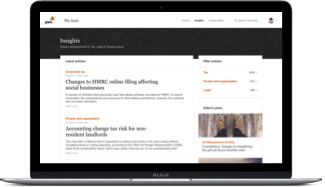A year has passed since the first COVID-19 lockdown in the United Kingdom (UK) and lockdowns are still in force in many parts of the world. Since then, employers have been dealing with displaced workers globally – some of which may still now be stranded in an unexpected location.
Both the UK tax authorities (HMRC) and the OECD have recently published additional guidance on the taxation of temporary displaced employees in response to concerns on the tax impact of COVID-19.
In practice, due to ongoing travel restrictions, many displacements which were originally thought to be temporary have now exceeded 183 days – often a key trigger for tax obligations. Employers are now managing many complex working scenarios – from those employees who are still stuck elsewhere and are unable to return due to travel restrictions to those employees who wish to remain in their displaced location and are asking to formalise arrangements.
As the first tax year of COVID-19 ends (2020/21 UK, 2020 for calendar year countries), employers need to be confident as to who their displaced workers are/were, understand and action any employer requirements versus employee obligations and consider their overall policy for ongoing displacements and virtual working requests.

